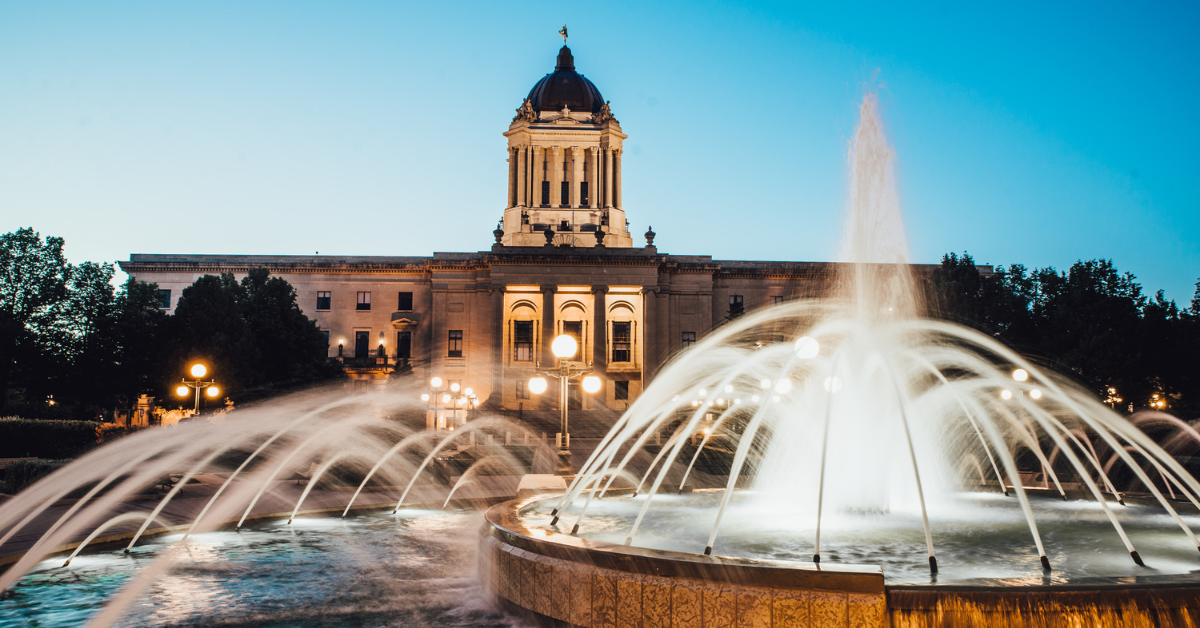Winnipeg, the capital of Manitoba, Canada, is written in katakana as “ウィニペグ” in Japanese, but in Chinese, it appears as the phonetic kanji “温尼伯.”
This difference reflects not only linguistic traditions but also how global communication shapes the way place names are expressed.
In this article, we explore the meaning behind “温尼伯” and the many aspects that make Winnipeg fascinating—from history and culture to sports and daily life.
The Kanji Notation “温尼伯” and Its Meaning
When expressing foreign place names in Japanese, katakana is the official and standard form. “ウィニペグ” follows this convention.
In contrast, Chinese often uses phonetic transcriptions in kanji, assigning characters based on the sound of the original word. Consequently, “Winnipeg” becomes “温尼伯 (Wēnníbó)” in Chinese.
| Language | Writing | Pronunciation | Feature |
|---|---|---|---|
| Japanese | ウィニペグ | Uinipegu | Official katakana form |
| English | Winnipeg | Winnipeg | Official English spelling |
| Chinese | 温尼伯 | Wēnníbó | Phonetic kanji transcription |
Thus, “温尼伯” is not an official Japanese expression, but rather the Chinese phonetic version. In Japan, newspapers, maps, and academic publications consistently use the katakana “ウィニペグ.”
Basic Facts About Winnipeg, Canada
Winnipeg serves as the economic, transportation, and cultural center of Manitoba. Situated at the confluence of the Red and Assiniboine Rivers, the city developed as a trading and logistics hub.
Its name originates from the Cree word meaning “muddy water.”
| Category | Information |
|---|---|
| Location | Southern Manitoba, Canada |
| Population | About 760,000 (as of 2024 estimate) |
| Area | Approximately 464 square kilometers |
| Climate | Humid continental (winters can reach below -30°C) |
| Major Industries | Manufacturing, agriculture logistics, IT, education, tourism |
| Nickname | “The Heart of Canada” |
Winnipeg is a city where transportation, education, and culture intersect, maintaining a balance between urban sophistication and abundant natural surroundings.
Japanese Impressions of Winnipeg
To most Japanese, Winnipeg is lesser-known compared to major cities like Toronto or Vancouver. However, for those who have lived there, it is often described as “peaceful and welcoming.”
Affordable living costs and a reputation for safety have recently made it an attractive study-abroad destination.
| Category | Japanese Impression | Reason |
|---|---|---|
| Living Environment | Calm and comfortable | Low traffic and quiet atmosphere |
| Cost of Living | Relatively low | Housing and food costs are affordable |
| Climate | Harsh but pure | Extremely cold, yet clean air |
| People | Warm and friendly | Multicultural and open-minded society |
| Education | High quality | Home to the University of Manitoba and other institutions |
Many Japanese residents and students describe Winnipeg as a city where warmth thrives despite the cold—a place where harsh winters strengthen community bonds.
Winnipeg’s Sports Culture
Winnipeg is a city where sports are deeply embedded in daily life.
The most popular sport is ice hockey, with the NHL team Winnipeg Jets being a central symbol of local pride. On game days, the city turns blue and white, reflecting the team’s colors.
| Sport | Team Name | Feature |
|---|---|---|
| Ice Hockey | Winnipeg Jets | NHL team with a passionate fan base |
| Canadian Football | Winnipeg Blue Bombers | Historic CFL powerhouse |
| Soccer | Winnipeg Valour | Focused on youth development |
| Ballet | Royal Winnipeg Ballet | World-renowned performing arts institution |
Sports are not just entertainment in Winnipeg—they are a cultural force that unites the community. Even during the long winters, people stay active in both indoor and outdoor facilities such as skating rinks and arenas.
The City’s Culture and History
Winnipeg experienced rapid growth in the late 19th century during the railway expansion era, earning the nickname “Chicago of the West.”
The city’s Exchange District, with its preserved brick buildings, remains a testament to that era and is now home to galleries and cafés, blending old-world charm with modern creativity.
Moreover, Indigenous heritage plays a vital role in the city’s identity. Museums and cultural centers highlight First Nations art and history.
The Canadian Museum for Human Rights, located in downtown Winnipeg, symbolizes the city’s dedication to diversity, equality, and education.
| Cultural Aspect | Description |
|---|---|
| Arts | Royal Winnipeg Ballet, Symphony Orchestra |
| Historical Area | Exchange District (World Heritage candidate) |
| Museums | Canadian Museum for Human Rights |
| Nature | Red River parks, Assiniboine Zoo |
Winnipeg is often described as a city where culture and nature coexist gracefully, offering visitors a serene yet inspiring atmosphere.
Connection With Japan and Global Recognition
Japan and Winnipeg have been strengthening ties through education and cultural exchange.
The University of Manitoba maintains exchange programs with Japanese universities, and the city hosts events introducing Japanese culture—such as traditional dance and tea ceremonies—during its annual “Folklorama” multicultural festival.
Internationally, Winnipeg is recognized as a “City of Peace and Human Rights,” participating in global UNESCO-related educational programs.
Why “温尼伯” Appears Online
When “温尼伯” appears in online Japanese text, it usually comes from Chinese-language media or automatic translation tools.
These systems often leave the Chinese characters untranslated, leading to confusion.
In proper Japanese usage, the only correct form is “ウィニペグ.” The kanji “温尼伯” should be viewed solely as a Chinese transcription.
Conclusion
Winnipeg is a city where cold weather meets warm hearts.
Its balance of nature, culture, and sports defines its identity and offers a unique charm distinct from other Canadian cities.
In Japanese, the correct name is “ウィニペグ,” while “温尼伯” is simply the Chinese phonetic form.
Positioned at the center of Canada, Winnipeg’s appeal lies not in extravagance but in its calmness, sincerity, and community spirit.
With the excitement of sports, the depth of the arts, and the beauty of its natural environment, Winnipeg provides both peace and inspiration to those who visit.






